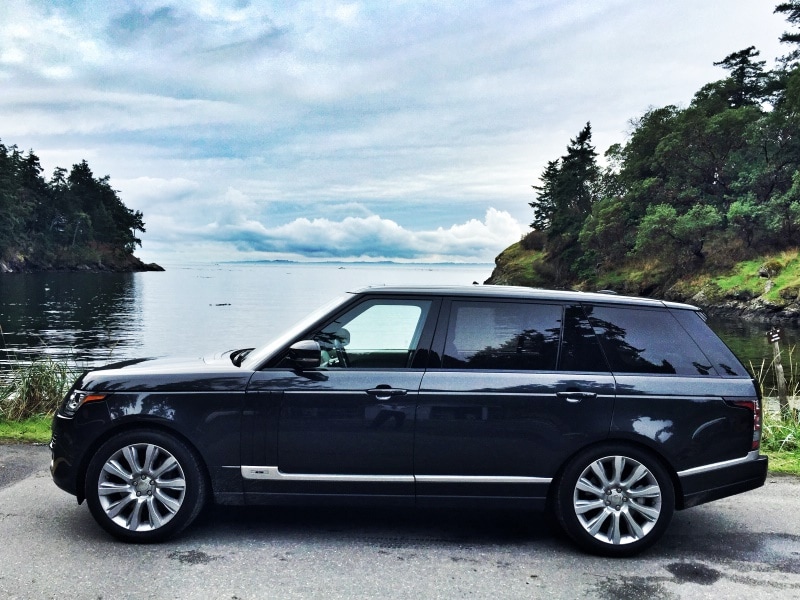Recent Articles
Popular Makes
Body Types
10 V8 Crossovers for Families Who Crave Performance
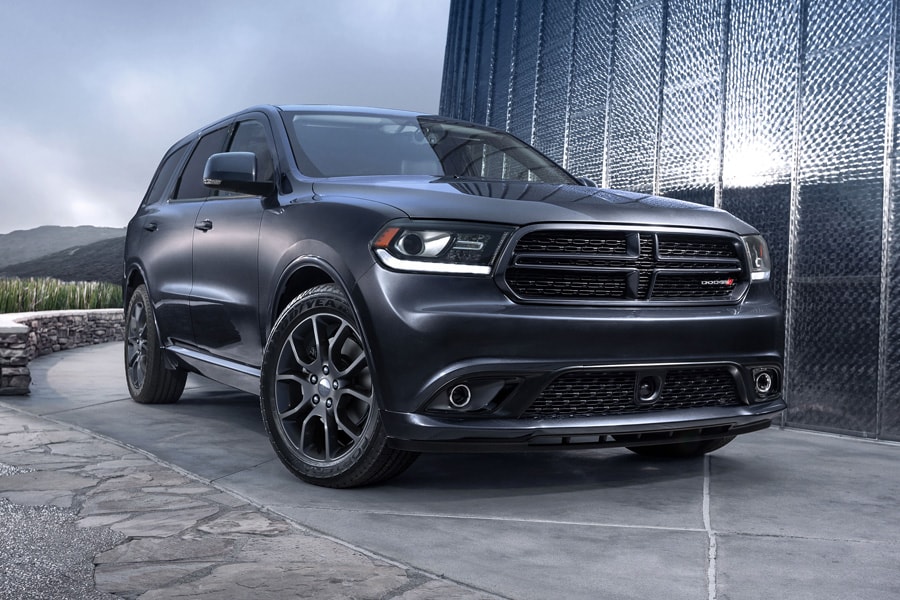
2016 Dodge Durango ・ Photo by Dodge
As automakers use more and more cutting-edge technologies to squeeze more and more power from smaller engines, the number of V8 crossovers left in this country has shrunk accordingly. At this stage, even the mainstream’s big three-row entries use four- and six-cylinder units. V8 powerplants tend to be reserved solely for premium crossovers, as well as for some of the remaining body-on-frame SUVs. Just remember, it’s unibody construction that makes a vehicle a crossover, and we’ve limited our list to exactly those products alone.
2016 Dodge Durango
Showing just how pricey V8 crossovers can be, even the least expensive one, the 2016 Dodge Durango R/T starts at a fairly substantial $42,490. Of course, since the Durango R/T depends on a standard 5.7-liter HEMI for motivation, drivers also enjoy a fairly substantial 360 horsepower, 390 lb.-ft. of torque, and 7,400 lbs. of towing power—all of which are best-in-class marks, according to Dodge. And notably, the Durango R/T delivers that output with a welcome dose of technology, from its fuel-saving cylinder-deactivation system to a standard eight-speed automatic transmission. Shoppers also should know that this sporty three-row entry does serve up plenty of premium content to go with its premium pricing, including standard Nappa leather front seats with both heating and ventilation, huge 20-inch wheels, a heated and leather-wrapped steering wheel, and Fiat-Chrysler’s Uconnect infotainment tech with an 8-inch touchscreen and navigation.

Photo by Fiat Chrysler Automobiles
2016 Jeep Grand Cherokee
The flagship SUV of America’s best-selling SUV brand? In its SRT trim, it’s one of the market’s fastest V8 crossovers. Indeed, with a 0-60 time of 4.8 seconds, a top speed of 160 mph and the ability to run the quarter mile in the mid-13s, the 2016 Jeep Grand Cherokee SRT can hold its own against quite a few actual sports cars. You can chalk that up to a 6.4-liter HEMI V8 that makes 475 horsepower and 470 lb.-ft. of torque, although there’s a lot more going on here than just engineers stuffing a big engine in a big Jeep. SRT engineers also deployed a hi-po braking system that enables it to run from zero to 100 mph, and then come to a complete stop, in a mere 16.3 seconds. There’s also a new eight-setting drive mode system to manage that power, and the vehicle’s AWD system, for optimum performance.

Photo by Fiat Chrysler Automobiles
2016 BMW X5
The Bavarians boast two distinct, yet closely related V8 crossovers, even if neither goes by that name. The 2016 BMW X5 is a “Sports Activity Vehicle,” and especially in its xDrive50i and M configurations, it certainly checks the box for sportiness. Each of those models relies on a 4.4-liter TwinPower Turbo V8 engine, with the former featuring 445 horsepower, 480 lb.-ft. of torque, and 0-60 acceleration of 4.7 seconds. The X5 M raises the boost bar to supply 567 horses and 553 lb.-ft. of torque, reducing the 0-60 sprint time to a bare 4 seconds. Customers who care about versatility also should keep in mind that it’s the X5 that offers a more traditional, crossover-style shape than the X6 “Sports Activity Coupe” that’s covered below, furnishing six more cubic feet, for a total of 66; oddly enough, the X6 has more cargo room behind the second row, 26.6 cubic feet to 22.9.
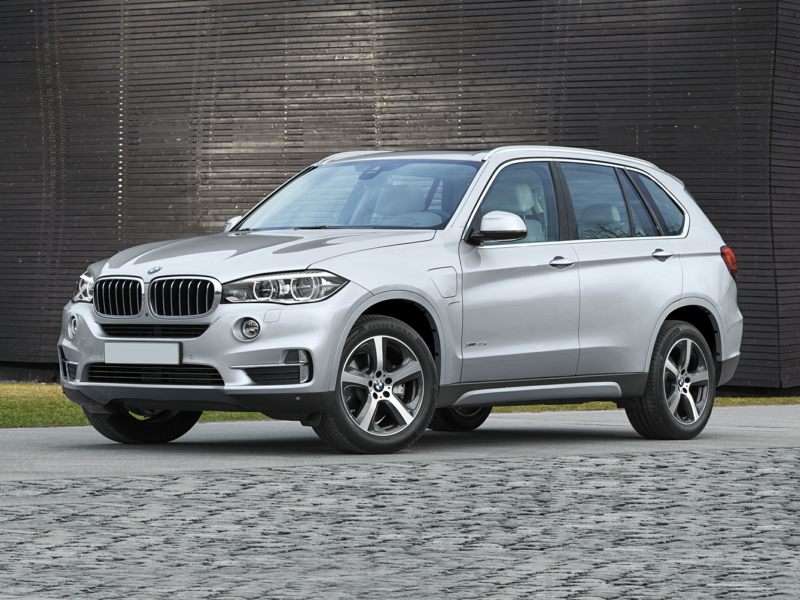
2016 BMW X6
Mechanically similar to the X5, the 2016 BMW X6 is the brand’s second-generation Sports Activity Coupe, and while its basic silhouette is now shared by at least one rival—see the MB GLE Coupe—the X6 does remain one of the most distinctively designed V8 crossovers. The bold rear-wheel arches, in particular, set it apart from the X5 visually, as do the flowing lines of the front fascia and, obviously, the sharply raked roofline at the rear. At the same time, the X6’s unique styling is matched by the same powertrains provided by its X5 sibling, so that the X6 XDrive50i and X6 M also enable the same kind of performance. Both are built in the U.S., too, at BMW’s facility in South Carolina. One minor difference: The X6 XDrive50i can rush from 0-60 mph in one fewer tick of the timepiece than its X5 counterpart, doing the deed in 4.6 seconds.
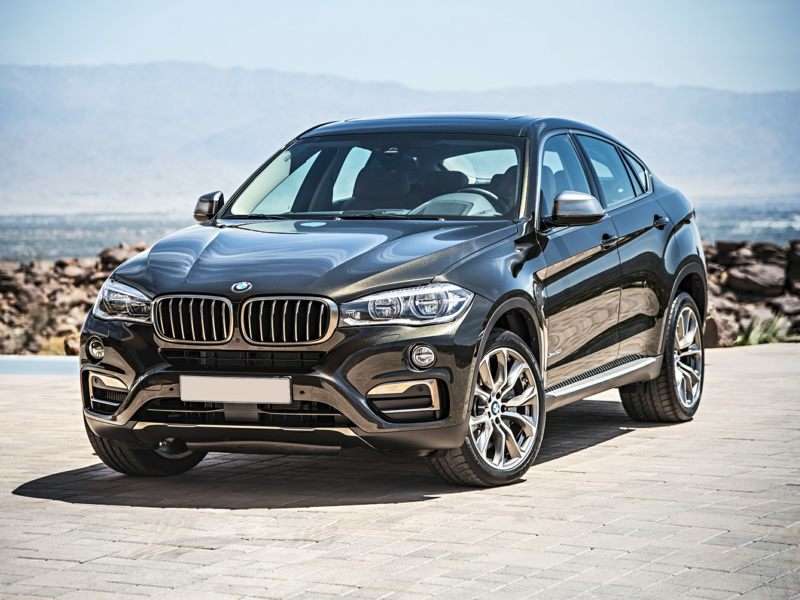
Photo by BMW
2016 Mercedes-Benz GL-Class
The full-size 2016 Mercedes-Benz GL-Class stands out for its premium amenities even compared to the industry’s other upper-class V8 crossovers, and those include a prominent package of driver-assistance measures that goes well beyond the usual suspects. For example, the GL’s crosswind-stabilization system can automatically correct for the effect of high-wind scenarios, both enhancing the driving experience and lessening necessary driver effort. Then there’s the vehicle’s highly capable powerplant choices, highlighted by a 4.7-liter bi-turbo V8 in the GL550 4MATIC and, for the AMG GL63, a bi-turbo V8 that displaces 5.5. liters and was lovingly hand-crafted by an AMG engineer. Each unit ensures a robust towing maximum of 7,500 lbs., but the GL63 also gets 550 horsepower and 560 lb.-ft. of torque, and also gets from 0-60 in 4.8 seconds. The GL550 has to make do with 429 horses, 516 lb.-ft. of twist, for an appropriate 0-60 result of 5.5 seconds.
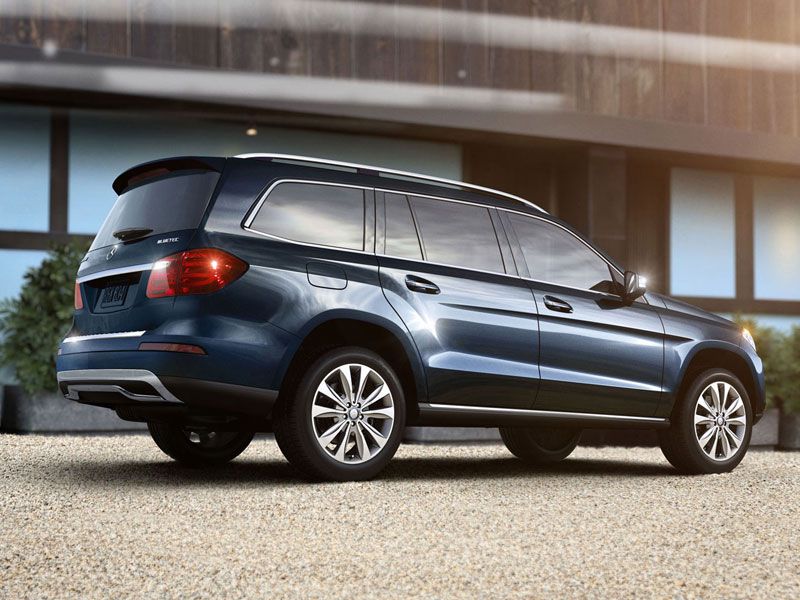
2016 Mercedes-Benz GLE
MB’s AMG V8 also gets fitted to the 2016 Mercedes-Benz GLE, which joins our list of V8 crossovers in its GLE63 and GLE63 S iterations. More specifically, that pair of high performers is provided with AMG’s 5.5-liter bi-turbo V8 engine, with the GLE63 packing 550 horsepower and 516 lb.-ft. of torque; in the GLE63S, the same engine has been retuned for 27 more horsepower and a further 45 lb.-ft. of torque. The difference on the pavement is a tenth of a second in the typical 0-60 time, as the GLE63 clocks in at 4.3 seconds and the upgraded GLE63 S at 4.2 seconds. These mid-size, two-row entries adopt AMG’s latest style cues, too. For instance, right up front, they wear the signature AMG “A-wing” front bumper design and chromed double-louvre grille, inspired by the performance division’s long track record of motorsports success.

Photo by Mercedes-Benz
2016 Mercedes-Benz GLE Coupe
First, let’s get something straight: The 2016 Mercedes-Benz GLE Coupe may be hard to categorize, but it’s not a coupe. It’s a five-door hatchback version of the GLE crossover SUV in much the same way the BMW X6 is for the X5. Yet while Mercedes is clearly playing following the leader in terms of the GLE Coupe’s format, it’s also setting the pace with a cleaner, more attractive design that’s plainly preferred by Autobytel’s panel of experts. Drivers with an eye on the bottom line for V8 crossovers should keep something in mind, however. Though the AMG GLE63 S Coupe delivers an admittedly sizzling 0-60 time from its 5.5-liter bi-turbo V8—backed by 577 horsepower and 561 lb.-ft. of torque—its 4.2-second result is .2 behind that of its Bavarian rival.

2016 Porsche Cayenne
Not many V8 crossovers care to brag about their Nurburgring times, but when you can lap Germany’s famed road-racing course in fewer than 8 minutes, you want to make sure enthusiasts know about it. Which brings us to the 2016 Porsche Cayenne Turbo S. Debuting for the current model year, the new Cayenne is the hottest one on the roster, thanks to a 4.8-liter bi-turbo V8 engine. That unit is good for 570 horsepower and 590 lb.-ft. of torque—gains of 20 and 37 over the previous model—and with the assistance of the now-standard Sport Chrono package, as well as Porsche’s traction-management and dynamic-chassis control, drivers can run the ‘Ring in 7 minutes, 59 seconds. In the more familiar territory of the 0-60 run, the Turbo S takes only 3.8 seconds to get up to speed, and that’s a full half-second faster than for the 2015 edition.
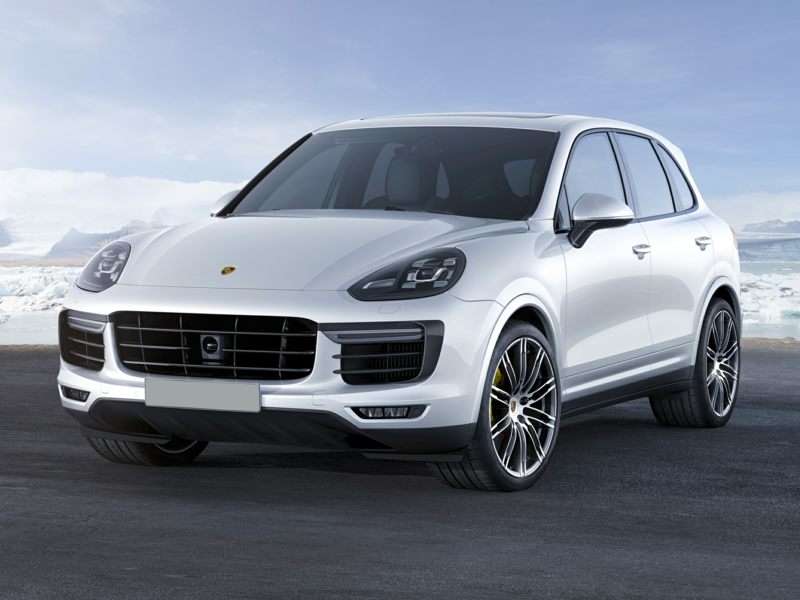
2016 Land Rover Range Rover Sport
Now boasting an aluminum-intensive unibody that reduced its curb weight by some 800 lbs. versus the previous-generation model, the 2016 Land Rover Range Rover Sport is a luxury leader among V8 crossovers. That said, this premium mid-size entry also provides enough off-road functionality to earn the crown as Four Wheeler magazine’s 2016 Four Wheeler of the Year. The prize went to the Range Rover Sport SVR, to be exact, recognizing the nameplate’s No. 1 performer and its supercharged, 5.0-liter V8 engine. It is the same unit used by the Range Rover Sport Autobiography trim—the Sport edition’s most luxurious configuration—but it’s been retuned for 550 horsepower and 502 lb.-ft. of torque, which represents increases of 40 horsepower and 51 lb.-ft. of torque over the Autobiography model. As for the rest of the performance story, the chapter on 0-60 times concludes with a 4.5-second run.
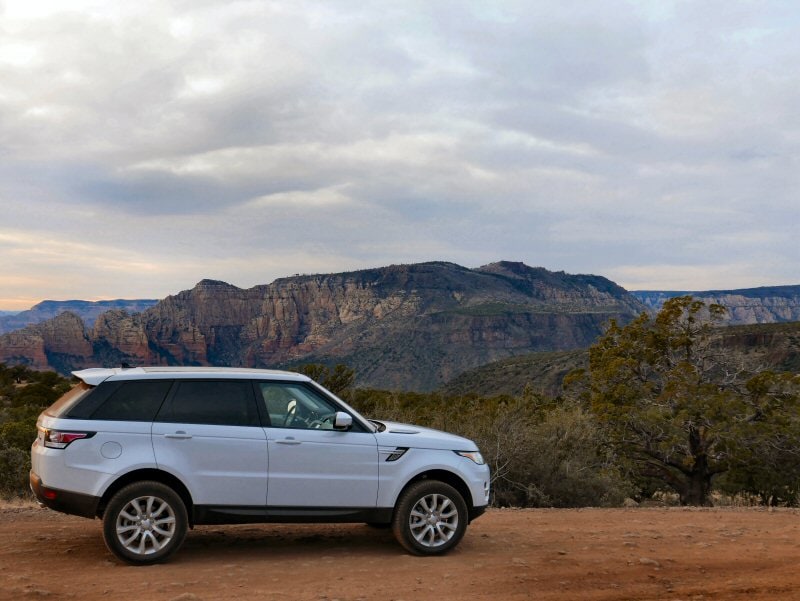
2016 Land Rover Range Rover
Finally, representing the pinnacle of the premium V8 crossovers, is the 2016 Land Rover Range Rover SVAutobiography. Available from a cool $199,495, this long-wheelbase luxury vehicle stretches to 204.7 inches, and showcases standard ultra-lux amenities like semi-aniline leather seating, real Macassar wood interior accents, Land Rover’s InControl infotainment and connectivity technology, and a 29-speaker, 1,700-watt surround-sound audio system by Meridian. The Range Rover is ready for roving, too, with an off-road-capable four-wheel drive setup, an electronic air suspension that enables 11.63 inches of ground clearance, and the ability to wade through nearly three feet of water. Meanwhile, on dry land, the range-topping Range Rover can race from 0-60 in 5.2 seconds or, alternatively, pull more than 7,700 lbs. Serving up the output needed for both accomplishments: a supercharged 5.0-liter V8 that can free up 510 horsepower and 461 lb.-ft. of torque.
